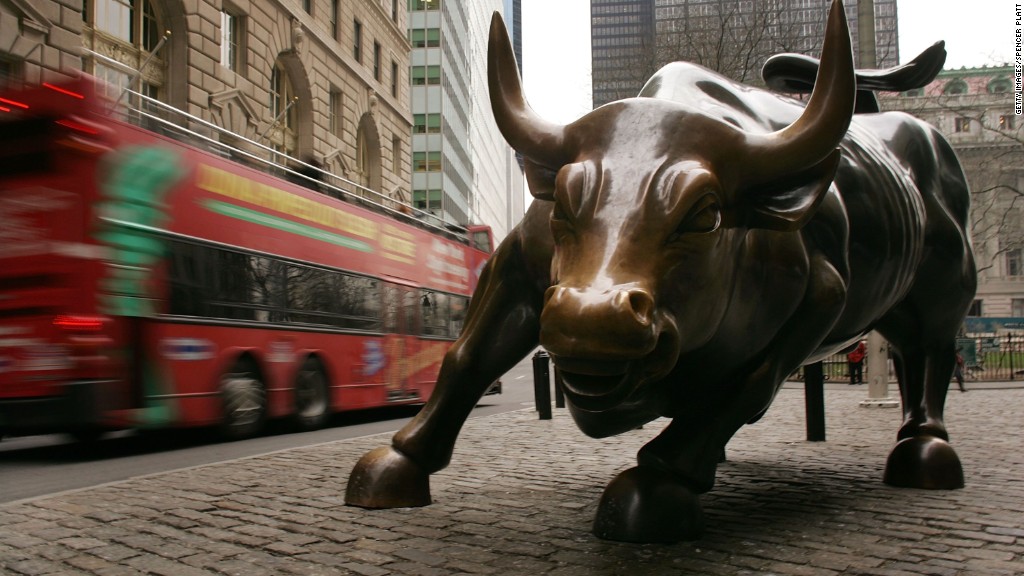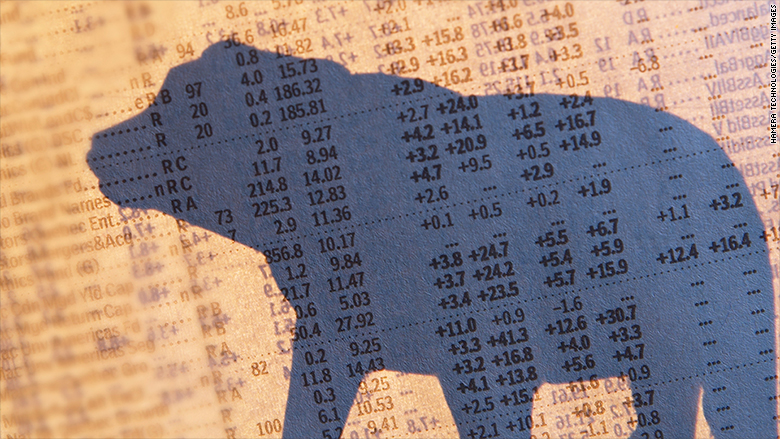
Doom and gloom is once again all the rage on Wall Street.
Fears that China's economy is crash landing have already wiped out $1 trillion of stock market value in 2016. U.S. stocks suffered their worst start to a year ever, and some fear a bear market -- or worse.
Billionaire George Soros warns the current situation reminds him a lot of the start of the 2008 global financial crisis. Royal Bank of Scotland, in a report that spread like wildfire, advised clients to "sell everything" ahead of a "cataclysmic year."
As if that wasn't enough, oil -- the lifeblood of economic activity -- collapsed below $30 a barrel this week. At least one big bank is betting that it could crumble to $10 a barrel.
Need more proof of the foul mood on Wall Street? Less than 29% of financial advisors surveyed by Investors Intelligence are bullish. That's down from nearly 50% at the end of October.
And CNNMoney's Fear & Greed Index, which looks at seven measures of investor sentiment, is now flashing "extreme fear," a dramatic reversal from "neutral" just two weeks ago.
The bears are growing in popularity, rising to 36% last week. That actually exceeds the multiyear high experienced in late September -- the last time the stock market went through a China-fueled panic attack. (See: Dow falling 1,000 points on August 24).
"The pieces look like they are in place for a continued liquidation," Investors Intelligence quotes James Flanagan, a Los Angeles financial advisor. He told clients to exit "all" positions in stocks.

Related: Why investors should NOT panic
But here's a reason not to panic: The last time people hated stocks this much, it turned out to be a great time to buy. In other words, bearish sentiment can be a helpful contrarian signal.
For instance, Investors Intelligence found that only 25% of advisors were bullish in the final week of September. Yet the S&P 500 soared 12% between September 28 and November 3 as investors realized the pendulum had swung too far in the negative direction.
"Such bearish readings have often set the stage for relief rallies," Ed Yardeni, president of Yardeni Research, wrote in a client note.
Of course, there's no guarantee the rebound will occur soon -- or at all. The bull market in stocks can't last forever, after all.
Still, Yardeni thinks the selling may have been overdone.
"We aren't convinced that the fundamental outlook for earnings has deteriorated as much as suggested by last week's panic attack," he wrote.
Related: Nearly half of U.S. stocks are in a bear market
Capital Economics seems to agree with that thinking, noting that bear markets tend to occur in and around recessions. While growth likely slowed in the fourth quarter, the U.S. economy still looks like it's in "healthy shape," the firm wrote in a new report.
Just look at Friday's strong employment report, which showed the U.S. added almost 300,000 jobs in December.
That's why Capital Economics is still forecasting the S&P 500 will end 2016 at 2,200 -- or 13% above Tuesday's closing level.
Morgan Stanley isn't freaking out either. Not only does the bank think the U.S. economic recovery could last until 2020, it's telling investors to "keep calm and carry on."
Adam Parker, Morgan's chief U.S. equity strategist, thinks diminished expectations for the newly-started earnings season will be a key catalyst to "calm fears."


